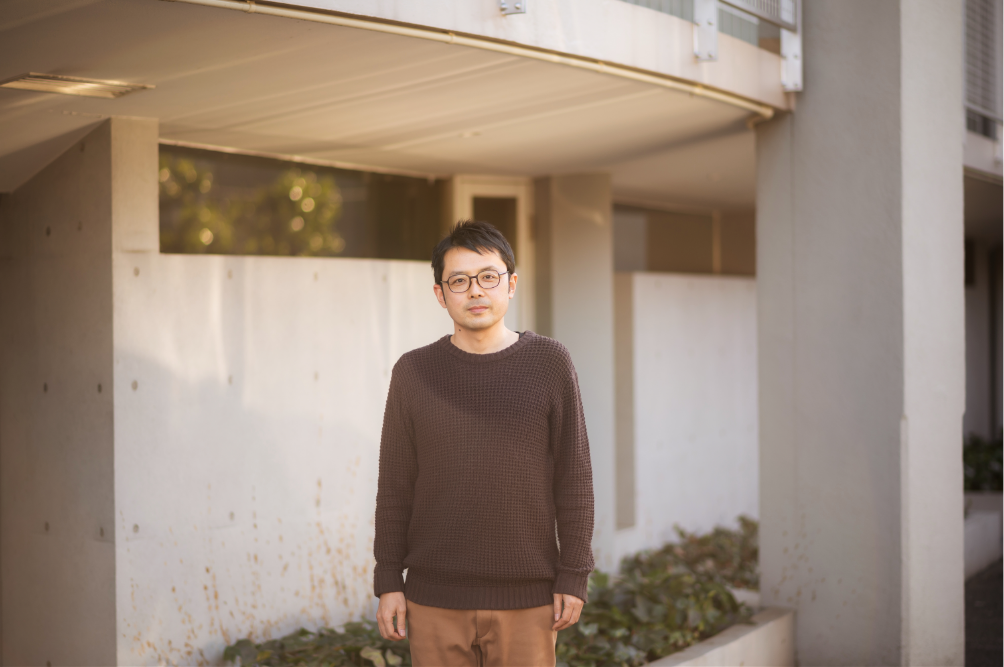

Mogicのかんがえをきく
Mogicの考えをお届けするため、代表にインタビュー。
SDGsの目標の一つでもある「教育」について訊いてみました。
濃厚でロングなインタビューになってます。
第一回
SDGsをきく

教育の会社だから
やればやるほど未来に向かって広がる可能性を届けたい
Contents


Mogicが考える教育
インプットに対してどうアウトプットしていくのか
-
ニュースでもよく耳にするようになりましたSDGsに絡めて代表に話を聞いていこうと思います。SDGsの4つ目の目標が、「質の高い教育をみんなに」というテーマなので、教育に絡めてMogicで大切にしていることを聞いていきます。
大学入試改革の一環で、共通テストに変わり考える力を問われる問題になったそうですね。個人的なことですが、高3の息子がいるので、身近なこととして捉えていますが、息子の高校では変わらず詰め込み型の教育をされてるようで、母親としては疑問を感じています。代表は、これからの世の中を生き抜いていくのに必要な教育、どんな教育が理想だと考えていますか?
山根
今までのセンター試験と違い、共通テストは考える力にフォーカスした試験ですって話じゃないですか。そもそもこれまでの傾向から、大きな教育の制度改革が行われるのは、20年とか30年に1回しかありません。今回の共通テストから学生の考える力を計りたいんですけど、今後20年後を見据えて今から始めてるから、急に学校の詰め込み教育は変われないんだと思うんです。実際に教育現場でどうやって変わっていくのかは、これからだと思います。
大事なことは、恐らく国が考えてることもそうだと思うんですけど、日本っていう国が高度成長期はうまくいきましたと。重厚長大で工場とか作って輸出して経済が良くなりましたと。だけど1990年代からあんまりうまくいってませんし、低成長ですということです。それが正解か不正解かはわからないんですけど。
ただ環境の変化はそれまでとは大きく異なってきていて、状況に応じた判断をみんなができないといけないねっていう認識があるんだと思うんです。インプット型の教育はインプットしたものを100パーセントきちんとアウトプットしなければならないんですよ。結果としてインプットに対してアウトプットはインプット以上にはならないんです。
じゃあ何がインプットされているんですか?って言ったら、過去にうまくいったことをインプットしてるんです。できるだけ100パーセントに近くアウトプットできても、状況が変われば意味がないっていう話で。今までにない新しい状況に対処するために、インプットに対してアウトプットが100パーセント以上にならなきゃいけない。それはどうやったらいいんでしょうって言ったら、インプットされたことをアウトプットするだけじゃなくて、自分なりに解釈を加えて価値を作らなきゃいけないと。そういうことだと思うんです。
だから、インプットに対してアウトプットどうしていくのかっていうところが問われていて、過去をインプットするだけじゃ未来には向かえない状態になってるので。だからそこを考えなきゃいけないってことじゃないですかね。
自分の将来に対して多くの選択肢が選べるように
-
これからの子どもたちは、どんな力を身につけていくといいと思われますか?
山根
どういう力を身につけていけばいいか……「考える力です!」と答えると、終わっちゃいますが(笑)。それだと深くならないので、具体的にどういう考える力なんだって話をちょっと考えてみたいと思います。
これSDGsの話とちょっと絡んできちゃうんですけど。「質の高い教育ってなんでしょうか」って言われた時に、自分の将来に対して多くの選択肢が選べるようになることだと思ってるんです。「あんな未来しかなくて、絶望的な気分になるよ」っていう状況だと非常に生きるのがつらい。だけど、「こういう勉強もしたら、ああいうチャンスがあるかもしれないし、こういうのがくるかもしれない」って思えるかどうかってすごく重要じゃないですか。
そう考えられるように教育するには、どうしたらいいのかっていうのは1個テーマなのかなと思います。例えば「ユーチューバーになりたい」と思って少しやってみるとか。「自分はまた新しくここをチョイスしたいんだ」って考えるっていうことですかね。
人生100年っていう時代ですから、20代に学んだことを30代40代50代60代までやらなきゃいけないこともないし。どんどん変わっていけばいいじゃないですか。そのほうが生きてる感じがするというか、時代とともに生きてるっていう感じがしますけどね。
-
そうですね。人生100年時代と言われて大人も学び直しだったり、リスキリングが大事になってきているという話もありますね。これから、どんなマインドでやっていけばいいのでしょうか。
山根
おそらく100年時代を今から20年後に向けてとかで目標を立てるときついと思うんです。だって20年後わかんないし正直、1年後もわからない。「1年後のためにこれをコツコツ今日やって成し遂げよう」ってToDoリスト作っても難しい時代になってきちゃったから。
「今日はこれが必要だな」とか、「1年後になんとなく必要だな」ってものをとりあえず1日15分やればいいんだと思います。なんでもいいと思うんです。ちょっと興味あること、例えば書道に興味があるのだったら、1日1個字を書いてみればいい。30日で30個になるから、30個になった時に、もっと書道がやりたいのか、それとも筆で絵が描きたくて水墨画に行きたいとか、実は油絵のほうにいきたいのか、わかんないですよね。
だけど、字を30個書いたプロセスにおいて気づきがあるはずなんです。その時に改めてもう一度考えればいいのかなと思います。だけど今の時点で全部固めて20年後を考えたら、20年後までの結果を今の判断だけで責任を負わなきゃいけないじゃないですか。それは多分難しいんだと思うんです。

ピンチに陥った時にうっすら支えられるプラットフォームを提供したい
-
コロナ禍を経て、先の読めない時代という実感が強まりました。Mogicは、これから社会にどんな貢献をしていきたいですか?
山根
(自社ブランドのeラーニングシステム)LearnOは、医療系の団体に多く導入されましたよね。コロナ禍で結構使っていただいたんです。僕らはエッセンシャルワーカーにはなれないけれども、エッセンシャルワーカーをうっすら支えられる仕組みではあったと思うので、みんながピンチに陥った時にうっすら支えられるプラットフォームを提供したいなと思います。
水道やガスとかと非常に近いと考えてるんです。いつもはあんまり気にしないけど、水は衛生的でなきゃ困るっていうことですかね。そういうものであればいいのかなと思います。
Mogicはみんなが楽しいものを入れられる箱になった
-
水やガスのようなプラットフォームでありたいということですね。それでは、Mogic自体はどんな存在でありたいと思いますか?
山根
Mogic自体は僕が1人で立ち上げましたが、10年目を越えて自分が所有して管理している会社というのはあんまり感じてないです。Mogicは、みんながちょっとした夢とか希望とか楽しみを詰め込む箱みたいになっちゃったなと思って。みんなそれぞれのMogicらしさ、私のMogicの好きなところってあるじゃないですか。
例えば、(Mさんだったら)悪口言う人がいなくて安心できる楽しさがあるとか、(Wさんだったら)自己表現を認めてくれる場所とか。そういう器だから、自分の会社っていう感じよりもみんなが楽しいものを入れられる箱になっちゃったなって感じがするんです(笑)。みんながこれまでできなかった夢を、ここだとできるかもしれないと思わせる場所にちょっとなった気がしてるんです。
-
それは確実になっていると思います。
山根
Mogic以外だったら諦めてたものが実現できる場所であってほしいなと思ってます。冒頭に関わってきますが、ここに来れば自分の選択肢が広がる場所なんだ、やればやるほど新しい楽しみが見つかってくるんだ、こういう可能性も自分の中であるんだって見つけられる場所であってほしいですね。それが働きたい人、働いてる人へのMogicのあり方だと思っています。
社会から見た時は、「そんな会社が成立していいんだ」「それは面白いやり方だ」「自分たちも考えたいね」って言ってくださる方が少しでもいれば、役立っているかなって気はします。僕らはあくまでも自分たちが疑問に思ったことを1個ずつ議論してつぶして、解釈しなおして作ってきた会社だと思ってるんですよね。
その解釈はどこかでコピーしてきたものじゃないから、その答えが正しいかどうかも全然わからないんだけど、1つの答えではあると思ってるんです。その答えが楽しそうで、誰かから「すごいね」「おもしろそうだね」「そんな会社の経営の仕方あるんだ」って言われる存在だといいかなと。冒頭から答えてることは、ポテンシャルとか可能性が未来に向かって広がるようにするにはどうしたらいいかと考えてる結果なんです。それは会社もサービスも、すべてのものに対して〈未来が開けるようにするにはどうしたらいいか〉ということがベースにあるんです。


Mogicと教育のはじまり
小さくてもいいからクリエイティブでグローバルな会社を作ろう
-
Mogicをそもそも作ろうと思ったきっかけ。どんなビジョンを持たれて起業されたのかを聞かせてください。
山根
一番最初ですよね。僕は、映画を撮るとか絵を描くために修士課程を休学してて、博士課程に進むよりも、もうちょっと自分なりに自由に生きたいというか、社会でものづくりをしたいと思ったんです。就職を考えて、いろいろな会社を見た時に20年後の自分の姿が思い浮かばなかったんです。
満員電車に乗らなきゃいけなさそうだし、偉くなったら偉くなったでしがらみありそうだし、スーツとか着なきゃいけなさそうだし、自分のやりたくないことをやってる可能性もあると思ったんです。なので、その時に既に考えていました。20年後は小さくてもいいからクリエイティブな会社で、グローバルでいろいろなやりとりもできるような会社を作りたいっていうコンセプトで。だから25歳で大学院を卒業する時には既にその気持ちだけはあったって感じです。
でも、いきなり起業するのは難しいだろうなと思って、起業するのに足りないものを書き出しました。足りない部分はどこに行ったら勉強できるんだろうと思って、会社を探して1社ずつ入っていって、転職しながら身につけていった感じです。やりたいこともやりつつ、この会社ではこのことを最低限学びたいって決めてから会社に行ってました。だから自分の部門だけじゃなくて、ほかの部門の仕事とかも勝手にやってたんです。
-
例えば、どんなことですか?
山根
例えば、前の会社だと自分は企画職だから企画の仕事だけやればいいのに、企業の買収の仕事にちょっと関わらせてもらって、法務部門とか経理部門の人と仲良くなって一緒にやってみたりとかしてたんです。それは将来自分が会社をやるとすると、なかなか大きな資本の移動とかは難しいかもしれないと思ったので。そうして1個ずつ自分の作りたい会社に必要なパーツみたいなのを集めて、ちょっとずつ色を塗っていった感じなんです。5年間ぐらいでなんとか埋まって、最終的には30過ぎぐらいで起業しました。
起業前に会社を辞める時は、部下が100人ぐらいいたこともあったので、辞めづらい環境でした(笑)。せっかく引っ張ってきた自負もあったから、みんなに申し訳ない気持ちもあり……最後までやりきれるとこまできっちりやりきりたいって言うのもあってタイミングをずっと図っていました。最終的にはある会社を買収して、引き継ぐところまできちんとできたって感じですね。半年後に買収した会社のサイトをリニューアルして、その翌日に「辞めます」って言ったんです。ほとんど休みなく働いてたので2カ月ぐらい有給を使って起業の準備をしてました。

起業するときに考えた3つのビジョンは
-
どんなビジョンをもって起業されたのでしょうか。
山根
1人で会社を始めたので自分の好きなように作りたいっていうか、会社が一般的に持ってるイヤなものは全部消したかったんです。消せるのかどうかを試したかったっていうのもあるんですけど。満員電車に揺られたくないとか、悪口とか陰口言うのは嫌だなとか、足の引っ張り合いもあるし、変な業務フローとか、いらない仕事もいっぱいあるし、本当に人のために役立ってるのかどうかわからないサービス当然あったりもするし、お金もうけ第一主義みたいな、そういうのもいっぱいあるじゃないですか。そういう疑問がいっぱいあったので、それを1個ずつつぶしたいっていうのが1つ目ですよね。
2つ目は、新しい価値を作っていく会社っていうのを作ってみたかったんです。それはどういうことかって言うと、ほかの人が見た時に「なんかよくわかんないけどワクワクする」とか「楽しそう」とか「働いてる人がキラキラしてる」っていう、「作ってるプロダクトもおもしろそう」とか思ってもらえるものが僕は価値がある、クリエイティブだと思ってたんで。そういう会社を作りたいっていうビジョンはありました。
3つ目は、21世紀に生きる会社だったので、そこで一番必要とされることにトライしたいと思ってました。少子高齢化なんで、教育か健康か医療の3つが特に重要なんです。基礎的な部分で絶対に必要とされているから、あんまりお金もうけとかそういうところじゃないんです。教育も健康も医療も一部は違いますが、全体的にすごくお金もうけする分野じゃない。公共的な部門じゃないですか。
だから人の役に立つし、すごく長く取り組まなきゃいけない。会社が爆発的に成長するって分野でないのは分かっていたんです。逆にいうと、すごく難しい分野だからこそ長く取り組んで作りこめるし、クリエイティブを最も発揮しやすい場所なんじゃないかって思ったんです。難しいからですね。そこがビジョンでした。その3つがあっただけで、何をやるかは決まっていませんでした。
-
ビジョンからどのようにサービスに落とし込んでいったのでしょうか?
山根
1人で始めて、途中でCTOでエンジニアの藤井に出会ったりするじゃないですか。最初のころは、何をしたらいいかがいまいちわからなかったので、はやりのサービスを見たり、受託開発でクライアントさんから仕事を受けながら、いろんなことをやってました。イベント会場のアプリとか。
「とにかくおもしろそうなものだったら、なんでも作ります」って言って作りながら、自分たちは何をしたらいいのかなっていうのを確認してたんです。たまたま医学部向けの専門学校の教育システムを作る機会があって、「やっぱりこれだな!」って思ったんです。ちょうどスマホが出たばかりで、サービスのスマホ対応は全然遅れてるし、市場は大きくなるはずだし、もっともっとITの力を使った教育って重要なんだろうなって思ったので。そこで、LearnOを始めた感じです。


Mogicの中の教育
Mogicらしい社内教育はフィードバックをよくすること
-
次は、Mogicの社内教育について聞かせてください。個人的には、フィードバックをとても大切にしていると感じています。社内で行われているMogicらしいトレーニングはどんなものがありますか?
山根
もともと誰かが何かをアウトプットしなければ、フィードバックもかけられませんよね。特徴としては冒頭に出ましたけれど、Mogicはインプット型の教育ではないので、とりあえず今自分が持ってるものを全部出せと。よく分かんないし、恥ずかしいかもしれないけど全部出せっていうことをなるべく出させるようにはしています。
例えば、インターンだとMicroTechって3カ月に1回ぐらいあるプロダクトづくりで、まずアイデアを出させています。「わかりません」って言っても「いつもやってるアイデアのリレー方式で1人ずつ言っていけ。5周するぞ!」みたいな。自分のアイデアを言ったときに、それがおもしろかったら誰かがそれに乗っかって言ってくれる。「私のアイデアおもしろかったんだ!」ってフィードバックがかかる。他人の意見を聞きながら「その視点もあったか!」ってまたフィードバックもかかる。1個決まったものに対していろんな積み重ねをしていって、また気づきがあるっていう感じです。インターン生にとってMicroTechっていうものがMogicらしいトレーニングになっていると思うんです。
社員は入社後に何をさせるかっていったら、会議の冒頭10分ぐらいで小話をさせています。一見簡単そうですが、実は結構難しい。小話って毎日起きてること普通に話してるとすぐにネタが尽きちゃう。だからどうするかって言うと、毎日暮らしていく中で「何を言ったらみんなにウケるかな。あの人はこんな感じだったらすごくおもしろがってくれるかな」っていうのが、思い浮かぶようになるはずなんです。
だから人のために何かをアウトプットしなきゃいけないって。それに対してアウトプットするからこそ、喜んでくれたり、つまらなかったとか言ってくれる。それで、「僕らは機械を相手にしてるんじゃなくて人を相手にしてるんだ」っていうフィードバックをかけていく。
人の反応は今週の反応と来週の反応が同じ反応をしようとしても違うので、ブレるものに対してどういうふうにフィードバックをかけていくのか。その時にしかできないフィードバックで学んでいくという。それはある意味、状況が非常に変化しているんだけれども、その中でもベストな答えを毎回見つけていく作業になるので、さっきの教育と似てると思うんです。人間を相手にして話をするのは非常に不確実性が高いので。
マネージャー層へのトレーニングはちょっと違います。多くの人を束ねる役割が最も重要なので、チームのメンバーがどういう気持ちでいるのかとか、どういう風な感じなのかを週に1回報告してもらったりしてるんです。だけど他の部門のリーダーからも「あの人はちょっとおかしいよ」とか、「あの時にこんな発言してたからなんか気になるね」っていうのももらうんです。チームの中にいると見えなくなる部分がありますから。違う部門のリーダーからメンバーに対して違う角度で言ってもらうことで、人を見るのにいろいろな角度があるんだって学ぶんです。そういうフィードバックをかけるっていうことですかね。

ちょっとワクワクできるしかけをどのくらい作れるかにこだわる
-
続いて、サービスづくりで大切にしていることとか、サービスに込める想いはどんなことがありますか?
山根
サービスは、Webデザインとプログラミングと最新のトレンドがあれば作れちゃうと思うんです。簡単に言ったら、ログイン画面とユーザー画面と管理画面を作ったらできちゃう。でも、そういうものはあんまり作りたくないなって思ってたんです。
結局、使ってる人に届かなくてもいいけれど、自分たちのこのプロダクトにこんなストーリーがあって、こんな仮説があって、こんなふうにやってほしいなっていう夢というか、余白というかその先までを描いてるんですよっていうものを作りたかったんですね。さっきお話したクリエイティブと一緒なんで、みんながちょっとワクワクできる、楽しく使いやすい、こんなの見たことがないっていうものが感じられるしかけをどのぐらい作れるかっていうのはこだわります。だからプロダクトのデザインを作る時も、デザイナーは困るでしょうけど、どういう物語でどんな世界観で使った時どんな気持ちになってほしいのか、細かく聞いちゃうんです。それで地獄行きになるんですけど(笑)。
そもそも、デザインづくりはすごく時間がかかります。LearnOの立ち上げでいうと開発は本当に1~2週間で藤井が作ってくれましたけど、デザインは4カ月かかってますから。
ポテンシャルを最大化させるようにプロダクトを作る
-
最初のLearnOでしょうか?
山根
最初のLearnOです。そこまでデザイン案を5案、6案ずっと出してできなかったんで、日本らしいWebデザインってなんだろうっていう話をしてました。なかなか答えがつかめなかったんで、高級な懐石料理屋に行ったらヒントがあるかなとデザイナーを連れて行ったんですね。そこで出されたお椀がくすんだ金色でした。それにヒントを得て「沈んだ金色っていうのは日本らしさだ」ってLearnOのゴールドが生まれてきたんです。その時Uさんが持っている本来の良さが解き放たれて、日本らしさと合わさった瞬間だったと思ってます。そういう偶然を捕まえなきゃいけないし、人のポテンシャルも最大化させるようにプロダクトを作らなきゃいけないので、とにかく手間暇かかりますよね。今なんかリブランドに、管理画面だけで1年以上かかっていますから。
笑い声の質と量を測定できるようになるといい
-
最後になりますが、SDGsのポスターを見ると、18番目の部分が空白になっているじゃないですか。そこに、山根さんだったら何を入れたいですか?
山根
「笑い声の質と量を上げる」っていうのがいいかなと思います。
-
量もですか(笑)。
山根
量もですね。ただ多ければいいというのは違うと思うんです。引きつった笑いとか乾いた笑いとか冷たい笑いも存在するから、質も上げなきゃいけないし。ポジティブに未来に向かってはじけるような笑いであってほしいわけじゃないですか。だけど、回数もほしい。今日も朝からずっと聞いてるんです。階段を伝って笑い声がするから「ああ2階が笑ってる。3階が笑ってる。4階のあそこが笑ってる」ってバラバラじゃないですか。
オンラインでつないだ時は同時に笑ってるし、つないでない時はバラバラに笑ってるけど、バラエティ豊かな笑いがあるんだと思ってるんですよね。それが僕はいい空気なのかなって思ってて。例えば、それだけの質と量の笑いがある場所で、その職場が非常に仲が悪いってことがありますかね?
-
ないですね。
山根
ずっとシーンとしていたら仲が悪いかもしれないけど、それだけの笑いの頻度があれば、だいたい仲がいいというか。何かを笑えるってことは未来に向かっているってことなので。笑い声って難しいけど、測定できるようになるといいなと思います。
-
こんなに会社に来て笑ってるってなかなかないんだろうなって、日々感じています。長くなりましたが、ありがとうございました。
山根
ありがとうございました。

